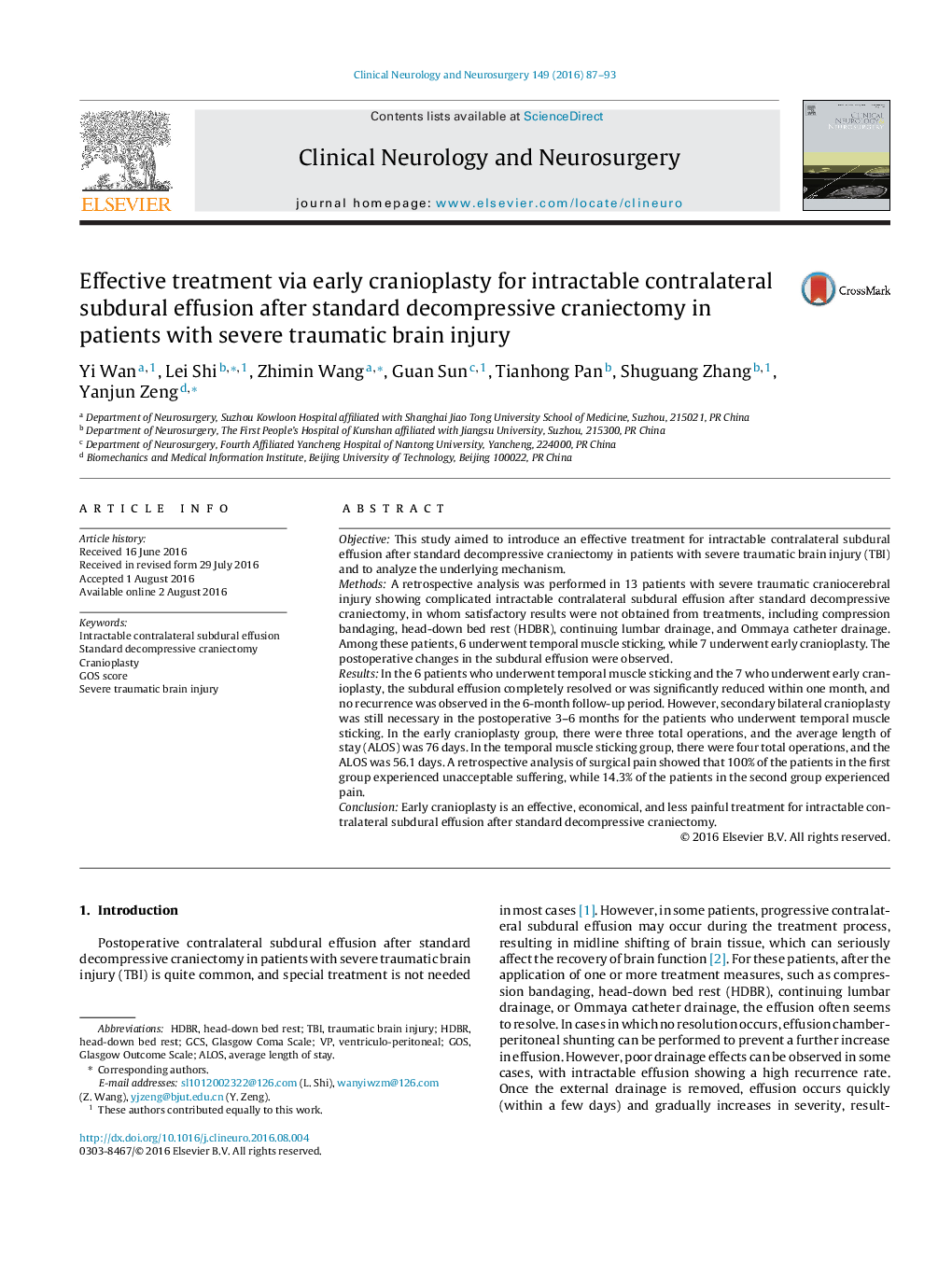| کد مقاله | کد نشریه | سال انتشار | مقاله انگلیسی | نسخه تمام متن |
|---|---|---|---|---|
| 3039463 | 1579673 | 2016 | 7 صفحه PDF | دانلود رایگان |
• Early cranioplasty is benefit for postoperative contralateral subdural effusion.
• Early cranioplasty is better than temporal muscle sticking.
• Early cranioplasty is an effective, economical, and less painful treatment.
ObjectiveThis study aimed to introduce an effective treatment for intractable contralateral subdural effusion after standard decompressive craniectomy in patients with severe traumatic brain injury (TBI) and to analyze the underlying mechanism.MethodsA retrospective analysis was performed in 13 patients with severe traumatic craniocerebral injury showing complicated intractable contralateral subdural effusion after standard decompressive craniectomy, in whom satisfactory results were not obtained from treatments, including compression bandaging, head-down bed rest (HDBR), continuing lumbar drainage, and Ommaya catheter drainage. Among these patients, 6 underwent temporal muscle sticking, while 7 underwent early cranioplasty. The postoperative changes in the subdural effusion were observed.ResultsIn the 6 patients who underwent temporal muscle sticking and the 7 who underwent early cranioplasty, the subdural effusion completely resolved or was significantly reduced within one month, and no recurrence was observed in the 6-month follow-up period. However, secondary bilateral cranioplasty was still necessary in the postoperative 3–6 months for the patients who underwent temporal muscle sticking. In the early cranioplasty group, there were three total operations, and the average length of stay (ALOS) was 76 days. In the temporal muscle sticking group, there were four total operations, and the ALOS was 56.1 days. A retrospective analysis of surgical pain showed that 100% of the patients in the first group experienced unacceptable suffering, while 14.3% of the patients in the second group experienced pain.ConclusionEarly cranioplasty is an effective, economical, and less painful treatment for intractable contralateral subdural effusion after standard decompressive craniectomy.
Journal: Clinical Neurology and Neurosurgery - Volume 149, October 2016, Pages 87–93
